Joan Cooke | |
|---|---|
 | |
| Died | c. 1544 |
| Spouse(s) | John Cooke |
Joan Cooke (died 1544/5) was the founder of The Crypt School in Gloucester following a bequest and request by her husband who died 17 years before her.
Joan Cooke | |
|---|---|
 | |
| Died | c. 1544 |
| Spouse(s) | John Cooke |
Joan Cooke (died 1544/5) was the founder of The Crypt School in Gloucester following a bequest and request by her husband who died 17 years before her.
The date and place of Joan Massinger (or Messenger)'s birth is not known but she was close to her family for all of her life. Her brother, Thomas, was an alderman and in time sheriff and mayor of Gloucester. [1] Her nephew William Massinger became an MP. [2]

She married John Cooke and they lived in the area of Gloucester known as Mary le Crypt. He was a wealthy brewer and mercer of Gloucester and like her brother one of the city's aldermen. John was the sheriff in 1494 and 1498 and mayor in 1501, 1507, 1512 and 1518. He was the richest person, and a significant benefactor, in the city. He died in 1528 and he requested that Joan should not remarry and that a grammar school should be built. [1]
The scheme was given effect by Joan, who survived him by 17 years and who became his heir and the new landlord. She continued to collect the rents until her death and resisted requests that the lands should be transferred in her lifetime. [1]
Joan created a tripartite deed of 1539, deemed to be the school's founding charter. [1]
The school remains today the most ancient in Gloucester. [3] A full account of the couple and their good works is described in the book by Roland Austin published in 1939 "Crypt School". [4] A portrait of the pair painted after Joan's death in about 1598 exists. [1] It shows her and her husband in his mayoral robe. It is in the collection of Gloucester City Council. [3]
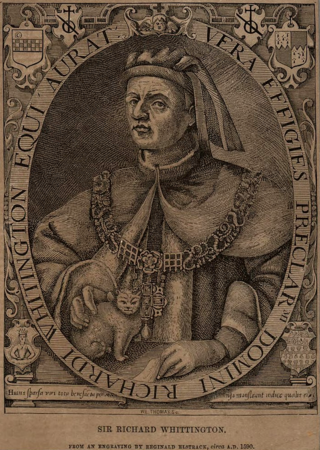
Richard Whittington of the parish of St Michael Paternoster Royal, City of London, was an English merchant and politician of the late medieval period. He is also the real-life inspiration for the English folk tale Dick Whittington and His Cat. He was four times Lord Mayor of London, a member of parliament and a Sheriff of London. In his lifetime he financed a number of public projects, such as drainage systems in poor areas of London, and a hospital ward for unmarried mothers. He bequeathed his fortune to form the Charity of Sir Richard Whittington which, nearly 600 years later, continues to assist people in need.

The Crypt School is a grammar school with academy status for boys and girls located in the city of Gloucester. Founded in the 16th century, it was originally an all-boys school, but it made its sixth form co-educational in the 1980s and moved to a mixed intake from year 7 in 2018, thereby becoming the only fully coeducational selective school in Gloucester. The school was founded in 1539 by Joan Cooke with money inherited from her husband John.

Miles FitzWalter of Gloucester, 1st Earl of Hereford was a great magnate based in the west of England. He was hereditary Constable of England and Sheriff of Gloucestershire.

Sir Thomas White was an English cloth merchant, Lord Mayor of London in 1553, and a civic benefactor and founder of St John's College, Oxford and Merchant Taylors' School.

Umberleigh is a former large manor within the historic hundred of (North) Tawton, but today a small village in North Devon in England. It used to be an ecclesiastical parish, but following the building of the church at Atherington it became a part of that parish. It forms however a part of the civil parish of Chittlehampton, which is mostly located on the east side of the River Taw.
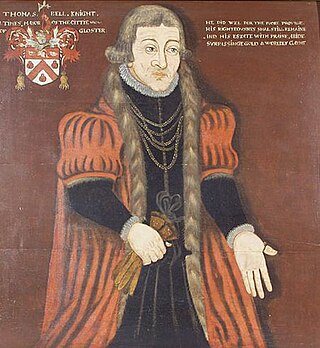
Sir Thomas Bell the Elder (1486–1566) was a cap manufacturer, mayor of Gloucester, and member of Parliament. He was one of the city's largest employers and wealthiest citizens and a great benefactor of the city and its people. He is described in contemporaneous documents as a "capper". He invested much of his wealth in real estate released on the Dissolution of the Monasteries, sometimes in partnership with Richard Duke, of Otterton, Devon, Clerk of the Court of Augmentations.
Peter Symonds was a wealthy English merchant and benefactor, most notable for founding a number of almshouses for charitable endeavors in Southeast England. His most prominent achievement was the foundation of an almshouse in Winchester which later was recommissioned into Peter Symonds College.
Sir Ralph Warren was twice Lord Mayor of London, for the first time in 1536 and the second in 1543.

Edward North, 1st Baron North was an English peer and politician. He was the Clerk of the Parliaments 1531–1540 and Lord Lieutenant of Cambridgeshire 1557–1564. A successful lawyer, he was created the first Baron North, giving him a seat in the House of Lords.

Elisha Smith Robinson (1817–1885) was an English businessman and politician.
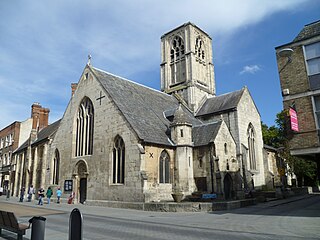
St Mary de Crypt Church, Southgate Street, Gloucester, is an Anglican Church, which was first recorded in 1140 as The Church of the Blessed Mary within Southgate. It is in the Diocese of Gloucester and is located adjacent to the ruins of Greyfriars. It has also been known as Christ Church and St. Mary in the South. St Mary de Crypt is a Grade I listed building.
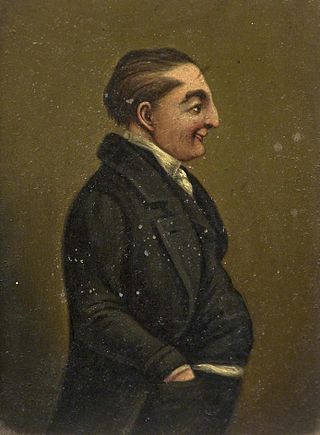
James "Jemmy" Wood was the owner of the Gloucester Old Bank who became nationally known as "The Gloucester Miser". His wealth of around £900,000 was stated at the time to have made him "the richest commoner in His Majesty's dominions".
John Browne (c1569-1639) was an English brewer and politician who sat in the House of Commons between 1614 and 1629.

Sir Giles Strangways, of Melbury Sampford, Dorset, was five times MP for Dorset in 1553, 1554, 1555, 1558 and 1559.
The Mayor of Gloucester is the first citizen of the City of Gloucester, England, and acts as chair of the council. The Mayor represents the Council and the City at civic, ceremonial and community events both inside the City boundaries and elsewhere.
William Massinger (1514/15–1593/94) was an English politician.
Joan or Jane Wilkinson (d.1556) was silkwoman to Anne Boleyn and Lady Lisle and a Protestant reformer. She was a friend of other leading reformers, including Bishops John Hooper and Hugh Latimer. During the reign of Mary I, she became a religious exile, and died at Frankfurt in 1556.
Sir William Lok was a gentleman usher to Henry VIII and a mercer, alderman, and sheriff of London. He was the great-great-great-grandfather of the philosopher John Locke (1632–1704).
The historic manor of Iron Acton was a manor centred on the village of Iron Acton in Gloucestershire, England, situated about 9 miles (14 km) north-east of the centre of the City of Bristol. The manor house, known as Acton Court is a Tudor building which survives today, situated at some distance from the village and parish church of St Michael. It was long the principal seat of the prominent Poyntz family, lords of the manor, whose manorial chapel is contained within the parish church.
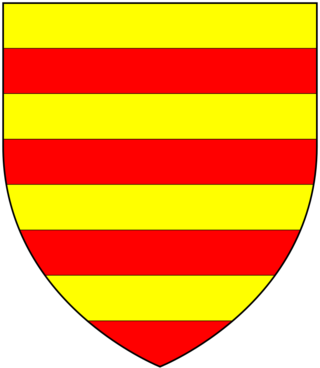
Sir Robert Poyntz, lord of the manor of Iron Acton in Gloucestershire, was a supporter of the future King Henry VII at the Battle of Bosworth in 1485. He was buried in the Gaunt's Chapel, Bristol, in the magnificent "Chapel of Jesus", a chantry chapel built by him.